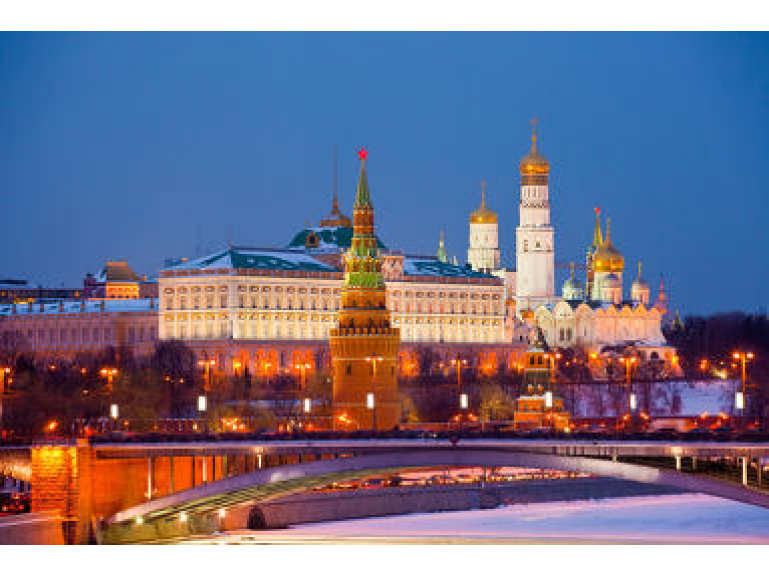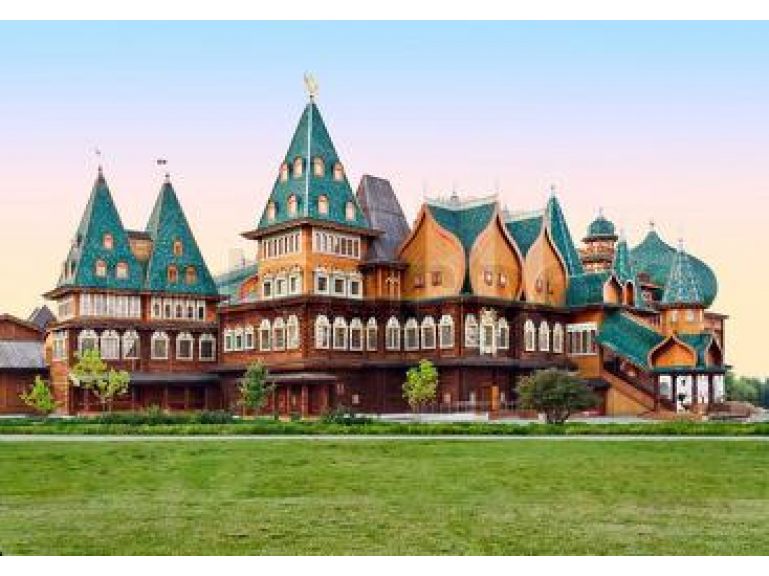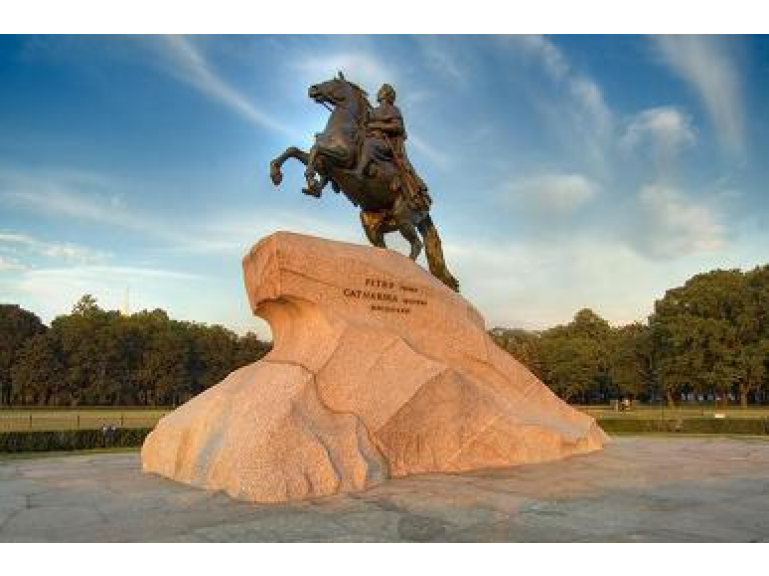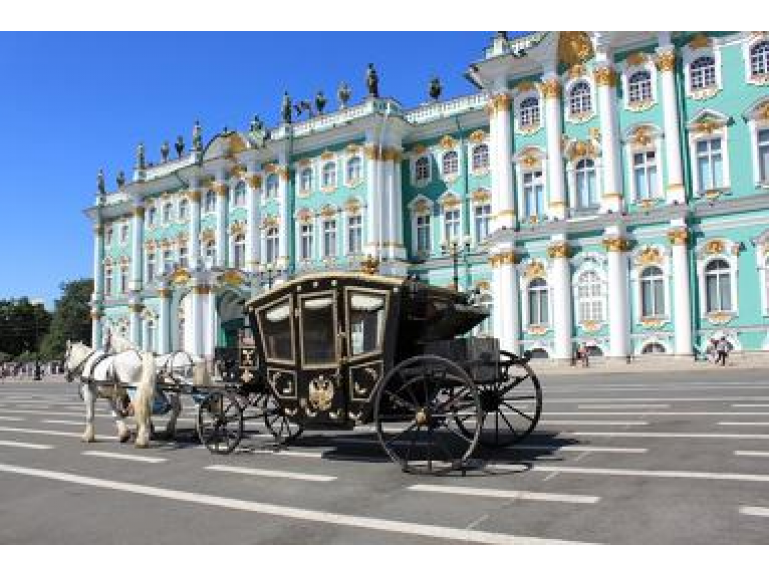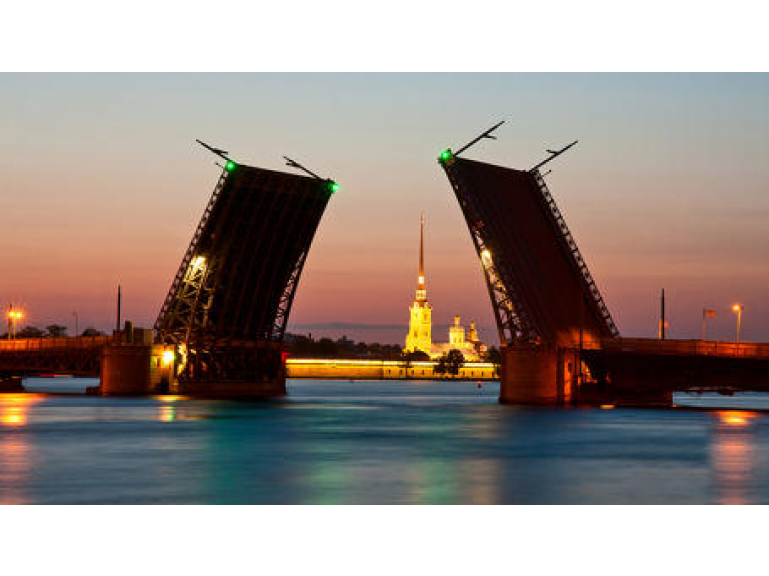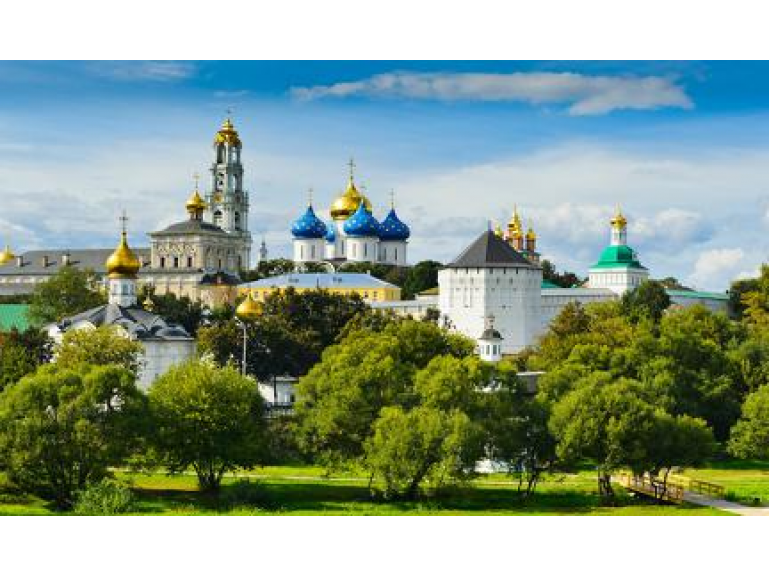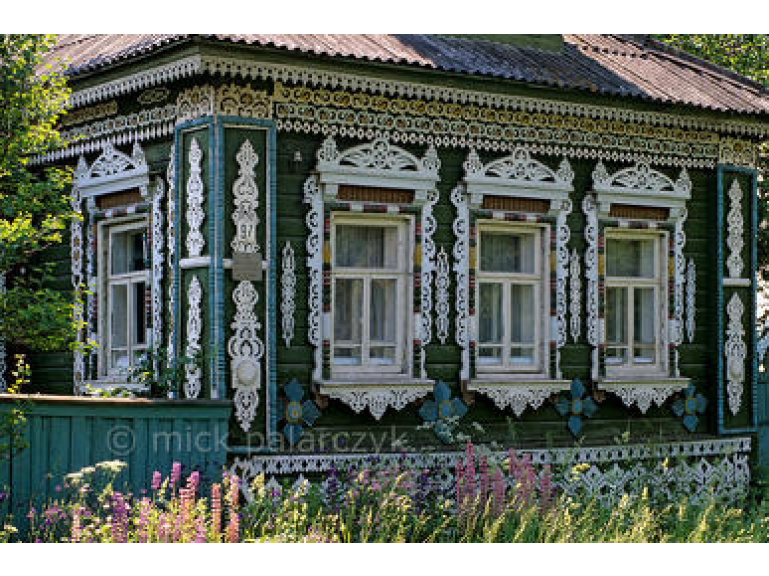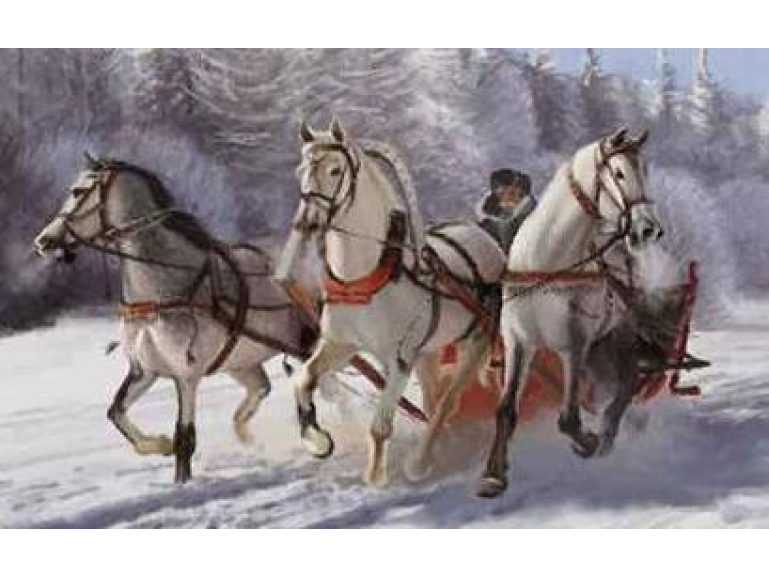Tourism in Russia

Rich cultural heritage and great natural variety place Russia among the most popular tourist destinations in the world. The country contains 23 UNESCO World Heritage Sites, while many more are on UNESCO's tentative lists. Major tourist routes in Russia include a travel around the Golden Ring of ancient cities, cruises on the big rivers including the Volga, and long journeys on the famous Trans-Siberian Railway. Diverse regions and ethnic cultures of Russia offer many different food and souvenirs, and show a great variety of traditions. It is the ninth most visited country in the world and the seventh most visited in Europe.
Moscow
The main attraction of Moscow still remains the ensemble of the Moscow Kremlin and Red Square — a unique complex of architectural monuments. There is a number of excursions held in the Kremlin which familiarize tourists with the architectural ensemble as well as the treasures of the Armory Chamber, old Kremlin cathedrals, historic necropolis, collections of ancient icons and so forth. On Saturdays from April to October, the President's Regiment demonstrates the ceremony of cavalry and foot-borne guard mounting in the Cathedral Square of the Moscow Kremlin.
The State Historic Museum located in Red Square holds numerous exhibitions often combined with theatrical performances with interactive participation of guests.
In total, there are 450 museums in the city.
In addition to indoor museums, Moscow possesses unique architectural, artistic and landscape cultural and educational facilities in the open air — Tsarytsyno and Kolomenskoe.
Apart from city tours, there is an option to take a longer river voyage to Moscow leisure areas, such as Joy Bay (northern shores of Klyazma Water Reserve), Pine-tree Forest — (the central recreation area at the Moscow Channel, to the north of Pestovskoe water reserve), Gorki and Dzerzhinsky areas.
Every day, 43 theatres open their doors to theatre-goers in Moscow. The best-known are the Bolshoi Theatre, the Lenkom, the Chekhov Artistic Theatre, the Moscow Operetta Theatre and many others. Excellent concerts are held in the Moscow State Chaikovsky Conservatory, the Moscow International Music House, the Glinka Musical Culture Museum, the House of Composers and etc.
Moscow is especially beautiful during the City Day (traditionally held on the first September weekend). Moscow always participates in International Museums Day — on May 18 all municipal museums are open for visitors free of charge.
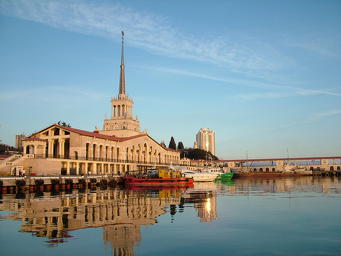
Sochi
In Sochi you should visit a unique nook of Russian Black Sea territories — the «Yew and Boxwood Grove» Reserve. Deep inside there are ruins of an ancient fortress dd. XI-XII centuries and the entrance into the yew and boxwood grove you would find the Museum of the Western Caucasus Flora and Fauna.
The Great Akhun Mountain, the Great Akhun Waterfalls, Stalin's dacha, the Dendrarium, dolmens, the Monkey Nursery, a Trout farm make a short list of the places of attraction you could see in Sochi. You would be offered a number of excursions to Abkhazia attractions. Besides that the city hosts annual international billiards club championships, international bicycle races, the All-Russia mountain bike championship and other events, including festivals for kids like «Magic of Dance», «Junior Kinotavr» and «Fairytale magic».
The Vorontsovskie caves that can be reached from Sochi are popular among cavers. One more attraction for keen speleologists would be one of the deepest karst caves in Russia — Nazarovskaya — 500 meters deep, which is located in the upper Khosta River of Krasnodar Territory.
Krasnaya Polyana (Red Glade) settlement 39 km far from Sochi is the center of mountain skiing and the place where Winter Olympics of 2014 took place. Here you would be able to enjoy slopes of various difficulties, a cable way that would take you up to the Aibga Range summit, horse rides along the mountains, rapid rivers, grand glaciers, crystal clear lakes and a few mountain skiing complexes that are a true present for people who enjoy active recreation. Extreme skiing fanatics could jump into a helicopter that would take you to mountain summits that reach 2238 m height here.
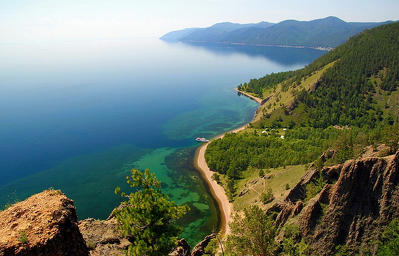
Baikal Lake is one of the most amazing destinations in Russia. The biggest and the deepest freshwater lake in the world (as big as Belgium) is located in the Eastern Siberia among the beautiful taiga forests and Nordic steppes. The water is so pristine and clean you could almost drink it while swimming. The beautiful shoreline has both wild areas great for camping as well as the comfortable tourist spots.
The atmosphere around Baikal is truly magical. It feels like an ocean: powerful, deep, raw and embracing at the same time. Back in the old days there used to be lots of local tribes making the lake their spiritual center.
It is especially good to visit Baikal if you're taking a Trans-Siberiantrain - the longest rail system in Russia, stretching from Moscow 9.198 km east to Vladivostok or (beyond Vladivostok) 9.446 km to the port station of Nakhodka. It had great importance in the economic, military, and imperial history of the Russian Empire and the Soviet Union.
The Trans-Siberian Railway is the great way to see the massive country. The full rail trip on the passenger train from Moscow to Nakhodka now takes about eight days, passing through endless forests of birch and pine, original settlements and vast steppes. Life on the rails can be really fascinating. Those who get into the rhythm of the stops and starts, and the passing parade of trees and towns, will find it an experience never to be forgotten.
Saint-Petersburg
Saint Petersburg that is also frequently called Palmyra of the North is one of the most beautiful cities in Europe and in the World.
The city has a multitude of sights that even the most sophisticated tourists would find interesting.
The Peter and Paul Fortress was the starting point of the city foundation and is one of the main points of attraction of St. Petersburg. The Fortress was laid by Peter the Great in May 1703.
St. Petersburg is proud to present one of the largest museum complexes of the World — the Hermitage. The Museum that consists of 7 buildings is located between Dvortsovaya (Palace) square, Millionnaya street and the Neva River bank. 400 halls enable visitors to see more than 3 millions of displays that include sculptures, paintings of famous artists, renaissance weapons and armour, pieces of art from Japan and China, archaeological finds and many more.
State Russian Museum offers the most complete collection in the World of Russian art of the period X — XX centuries. The collection includes over 400 000 items.
St. Isaac's Cathedral was erected in the name of St. Isaac Dalmatski and used to be the main Cathedral of the Russian Empire. This is one of the largest orthodox churches in the World that could house 10 000 people. The construction of the Cathedral went for 40 years.
The most exciting tours around St. Petersburg are boat cruises. Such excursion would let you see the city from a slightly different perspective; you would sail underneath old bridges, enjoy stone lying, see mighty steel constructions in the close range and visit the most picturesque corners of the city in a day's time. And at midnight you could witness opening of the city bridges to let large vessels pass into the open sea.
The period between June 11 and July 2 is the time of the «white nights» in St.Petersburg that have been the symbol of this beautiful city for years. During the «white nights» the natural light does not go beyond twilight. This is the time for the International Music Festival «White Nights» and the «Alye Parusa» (Scarlet Sails) Festival for school and college graduates.
The Golden Ring is a ring of cities northeast of Moscow. These ancient towns, which also played a significant role in the formation of the Russian Orthodox Church, preserve the memory of the most important and significant events in Russian history.
The 'classical' route (counter clockwise) starts from Moscow, goes through Vladimir, Suzdal, Kostroma, Yaroslavl, Rostov Velikiy, Pereslavl-Zalesskiy, Sergiev Posad. All cities and towns are located relatively close to each other, the 'Golden Ring' forms a ring, so from one place you can reach to another and make a circle until you get back to the one you started with. Probably, most often you'll use buses to move along the golden ring, sometimes you'll use trains. You can also 'make' the golden ring trip by car.
Vladimir: The first town of the Golden Ring, 179 kilometers to the east of Moscow with 378 thousand people living there. It is located on the railway to Nizhniy Novgorod, and it is the first stop along the Trans-Siberian route. Vladimir is an old Russian town, it used to be capital of Russia in the 12th century.
Sergiev Posad: It is s a vibrant spiritual and craft center, located just in 70 kilometers to the north of Moscow. Its main attraction is the monastery called The Trinity Lavra of St. Sergius. It is a Unesco World Heritage site. It has been an important religious site throughout almost seven centuries. Pilgrims from all over the world visit this holy place for spiritual enlightenment.
Suzdal: A calm ancient Russian town 38 kilometers north of Vladimir with around 13 thousand inhabitants. Suzdal is officially protected from the industries, and the old architecture and buildings are kept intact.
Ivanovo: It is quite a big city (450 thousand inhabitants), located between Suzdal and Kostroma. There are several objects of cultural heritage in Ivanovo. Among them are the buildings of the constructivism style. Many monuments are devoted to the revolutionary past of the city. The historical center of the city is notable mainly for the former houses of famous Ivanovites: the mansion houses of E. I. Gratchev (1774), I. N. Polushin (1904; here the Soviet government was first declared). The industrial architecture, like the remaining textile manufactures of the 19th century, is also of interest.
Kostroma: A surprisingly calm and inviting town, located on Volga river, 120 kilometers north of Ivanovo. The interest is to walk around the town, especially early morning, or late evening, and see the Ipatiev's Monastery on the other side of Volga.
Yaroslavl: Yaroslavl got its name from Yaroslav Mudry, who founded the town in the beginning of 11th century, at the place where Volga river meets Kotorosl. Now it is a large industrial city, the biggest along the Golden Ring (630 inhabitants), nevertheless very interesting because of its history, architecture, and city life.
Rostov Velikiy: An ancient Russian town located on the 'Nero' lake. The history of this place started 4 thousand years BC, when the first tribes stayed next to the lake. Until the 11th century the territory of Rostov was inhabited by the Finn-Ugors 'Meryans' people, and the city of Rostov was founded by them. Slowly they assimilated with the Slavs, who came from the south. Now it is a small town (32 thousand inhabitants), old buildings, the Kremlin, and authentic Russian architecture.
Pereslavl-Zalesskiy: An old Russian provincial town, famous for its many monasteries, old churches, the first boat build by little Peter the Great, and Pleshcheevo Lake (which has the status of national park from 1988).

